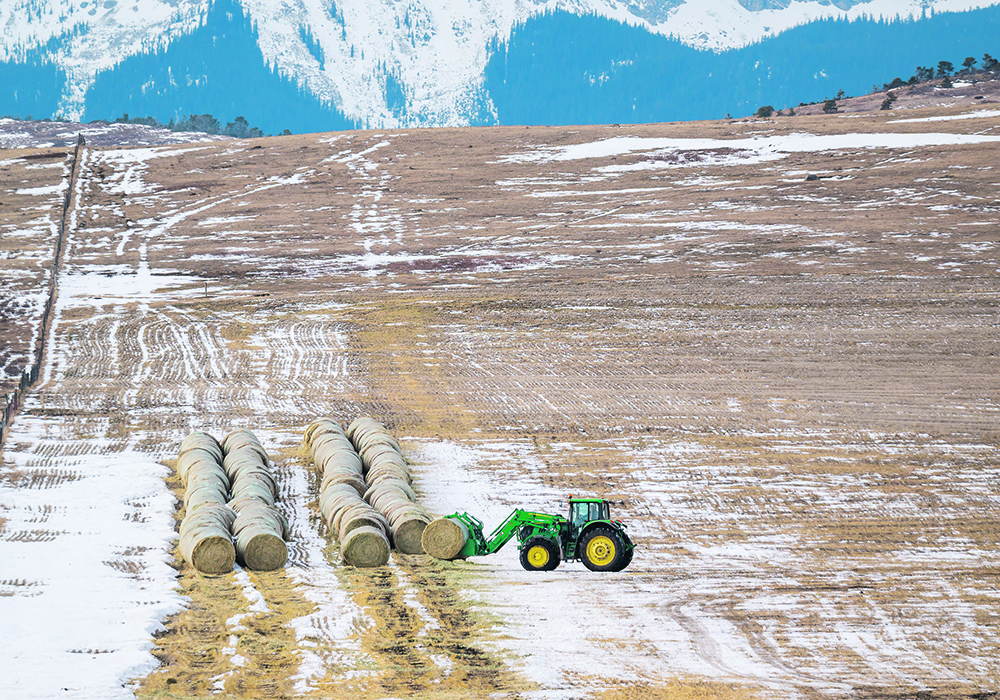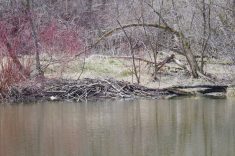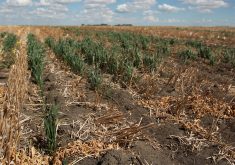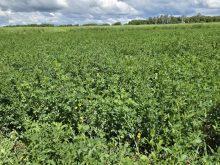UPDATED – Video added to story January 16, 2024 – 1515 CST – MEDICINE HAT — An early January snowfall across the Prairies brought slight relief to dry conditions following one of the warmest, driest Decembers on record in Alberta and Saskatchewan, but drought concerns remain.
Alberta is moving into high gear to co-ordinate agricultural, industrial and municipal responses if drought conditions persist. Drained irrigation reservoirs and low snowpack don’t bode well for a healthy spring runoff.
Southern Saskatchewan relies on the South Saskatchewan River system to supply 60 percent of the province’s drinking water and feed its burgeoning irrigation ambitions. River flows into Lake Diefenbaker fell to 28 percent of average in 2023.
That level and the water level in southern Alberta’s Oldman Dam, the province’s largest irrigation reservoir, have stabilized, but lack of snow cover across both provinces is making a bad situation worse, according to Phillip Harder, research director and hydrological scientist with Croptimistic Technology Inc.
“In the overall sense, what I’m seeing is nothing good in terms of soil moisture status,” said Harder.
“Right now, we don’t have (hydrological) input but also have an increase in output. We have really intense temperature and water vapour gradients, which are essentially moving water from depth to the surface.”
That causes sublimation, allowing for evaporation of existing frozen moisture.
“Things are drying out the longer we don’t have any snow,” said Harder.
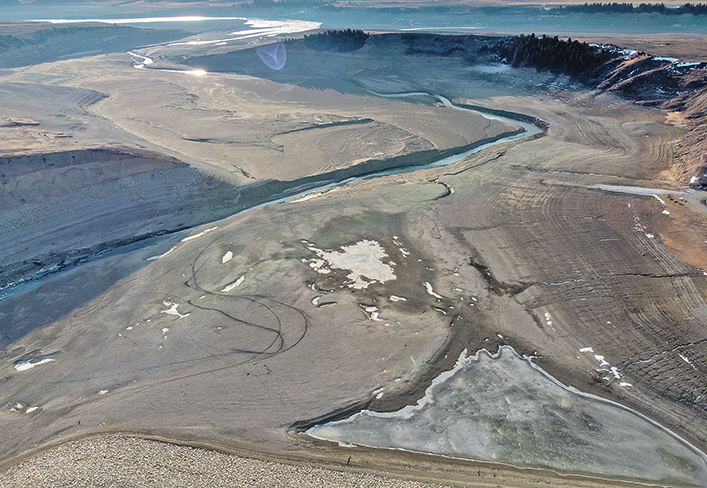
The amount of loss through sublimation may not be high but soil moisture levels are already low. Most of Alberta is experiencing at least a moderate drought and parts of the southern region are in exceptional drought, according to the Canada Drought Monitor.
The situation in Saskatchewan is similar and southern areas along the Alberta border are in extreme drought.
Harder said a heavy spring deluge at the right time could right the situation.
“That is in the range of possibility. But that’s a pretty small chance and one nobody should plan on,” he added.
In the past three years, the prairies received early and large snowfalls, bringing moisture that infiltrated the soil.
“There’s a little bit of a complacency that can creep into this because it seems we can grow great crops on very little rain. The challenge, though, has been that it was coming from the snow. There’s some data from this past season that 50 percent of our canola crop water use was from the snow.”
Harder said this fall and winter haven’t had snow amounts seen in previous years and “the soil conditions are such that if we do have snow, we are primed for not completing infiltration and we’ll have more runoff. That’s the most likely outcome.”
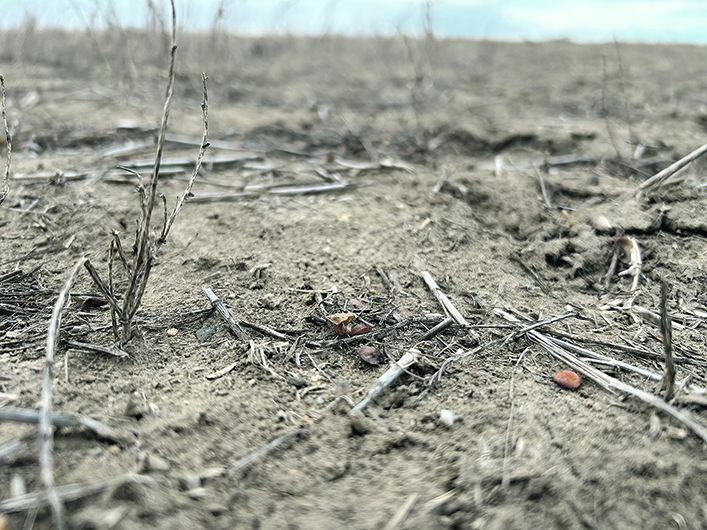
Consistent rainfall in spring will be needed to break the current drought, he said.
“The situation we’re going into is we don’t have reserves and so this year it will be especially important to have timely rains to get us through.”
The situation for irrigation is also a concern. Several southern Alberta farmers were unable to do their usual fall watering after harvest when extremely low reservoir levels led to an early system shutoff.
A quick and early snow melt from mountain runoff in 2023 “caused problems because the timing was off between water availability versus demand. The scenario this year is going to be even more critical that those things line up,” Harder said.
Alberta is preparing for a worst-case scenario. Discussions with water stakeholders, involving the agricultural sector, municipalities and the oil and gas industry, are focused on developing water sharing agreements.
Alberta’s first-in-time, first-in-right system of water allocation gives the oldest licence holders priority over newer ones. Most of the oldest and largest water licences are held by irrigation districts, which can issue priority calls to access water.
Such priority calls during previous droughts in 1988 and 2001 were avoided by use of water-sharing agreements between stakeholders.


